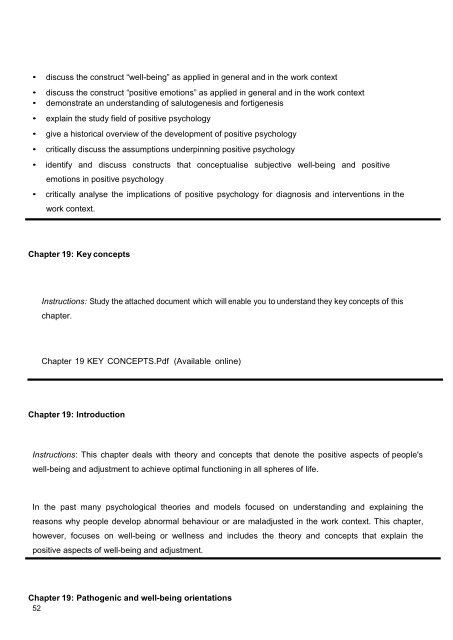IOP1601_MO001_3_2016_E
You also want an ePaper? Increase the reach of your titles
YUMPU automatically turns print PDFs into web optimized ePapers that Google loves.
• discuss the construct “well-being” as applied in general and in the work context<br />
• discuss the construct “positive emotions” as applied in general and in the work context<br />
• demonstrate an understanding of salutogenesis and fortigenesis<br />
• explain the study field of positive psychology<br />
• give a historical overview of the development of positive psychology<br />
• critically discuss the assumptions underpinning positive psychology<br />
• identify and discuss constructs that conceptualise subjective well-being and positive<br />
emotions in positive psychology<br />
• critically analyse the implications of positive psychology for diagnosis and interventions in the<br />
work context.<br />
Chapter 19: Key concepts<br />
Instructions: Study the attached document which will enable you to understand they key concepts of this<br />
chapter.<br />
Chapter 19 KEY CONCEPTS.Pdf (Available online)<br />
Chapter 19: Introduction<br />
Instructions: This chapter deals with theory and concepts that denote the positive aspects of people's<br />
well-being and adjustment to achieve optimal functioning in all spheres of life.<br />
In the past many psychological theories and models focused on understanding and explaining the<br />
reasons why people develop abnormal behaviour or are maladjusted in the work context. This chapter,<br />
however, focuses on well-being or wellness and includes the theory and concepts that explain the<br />
positive aspects of well-being and adjustment.<br />
Chapter 19: Pathogenic and well-being orientations<br />
52


